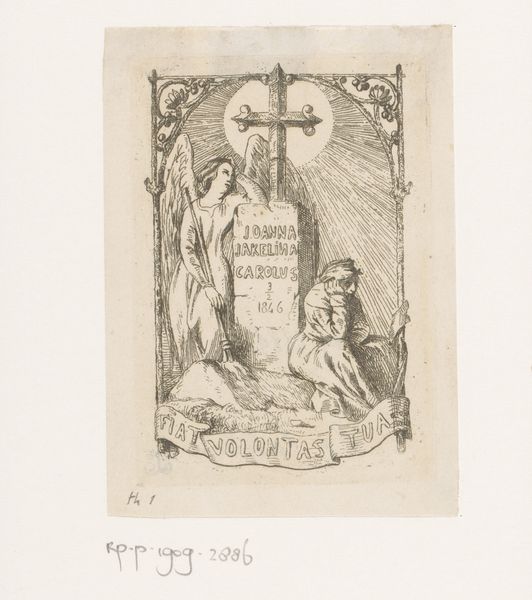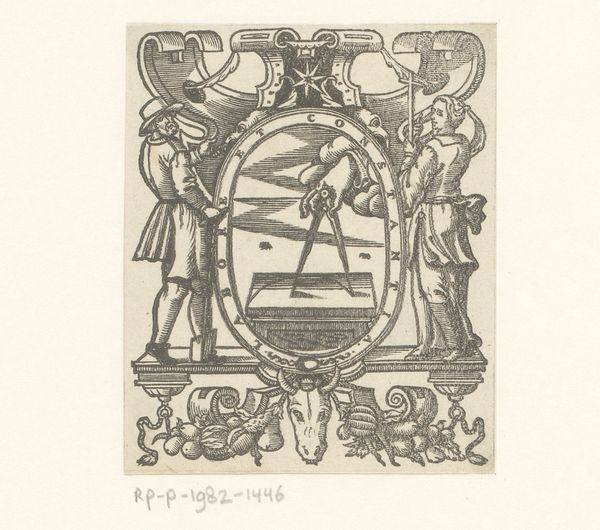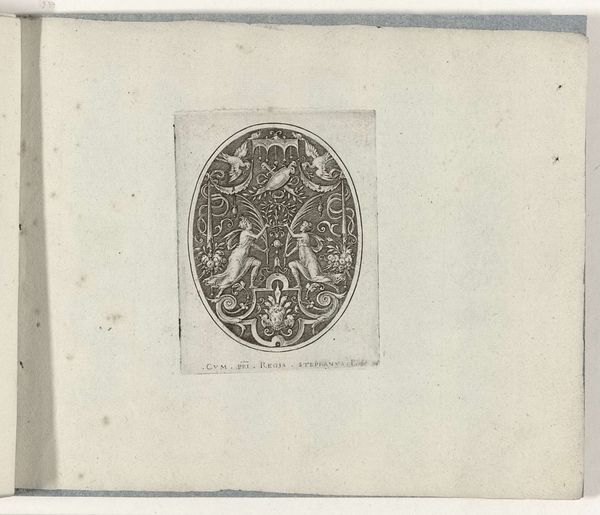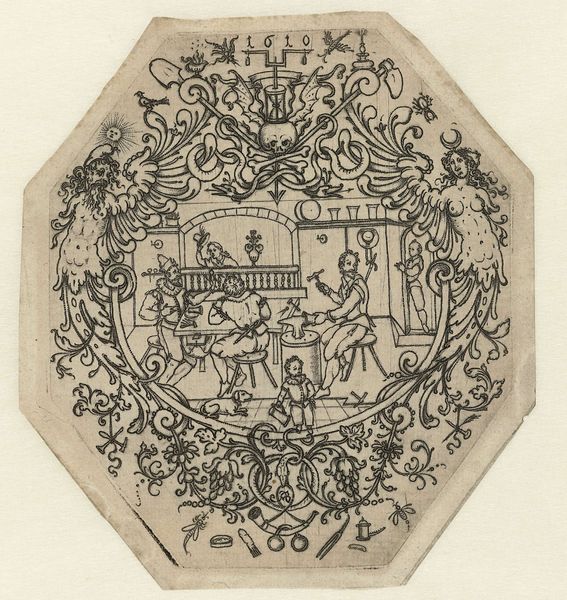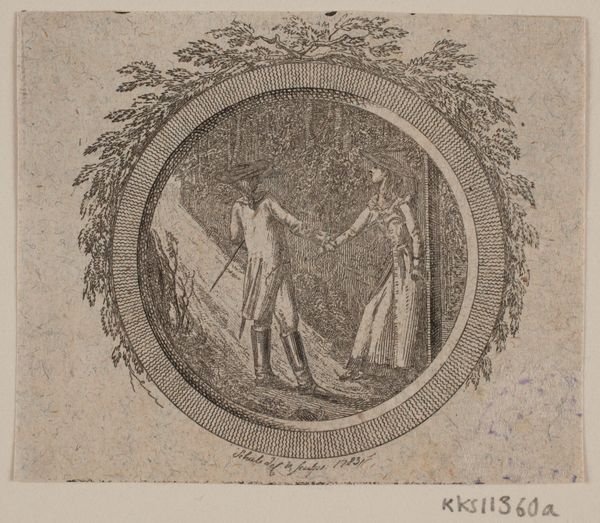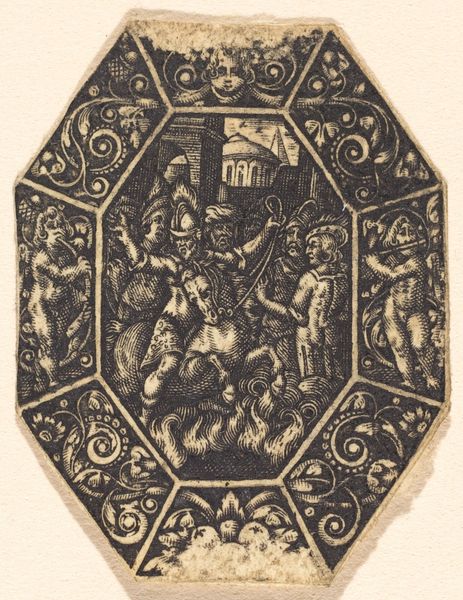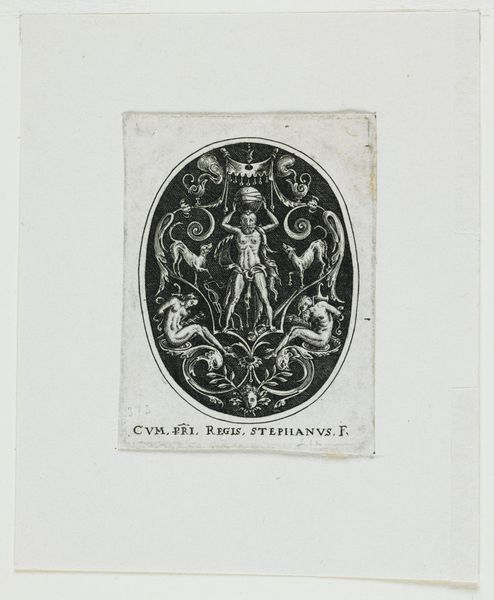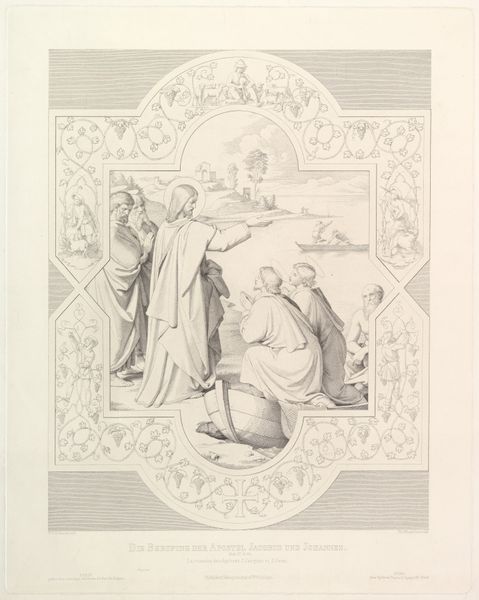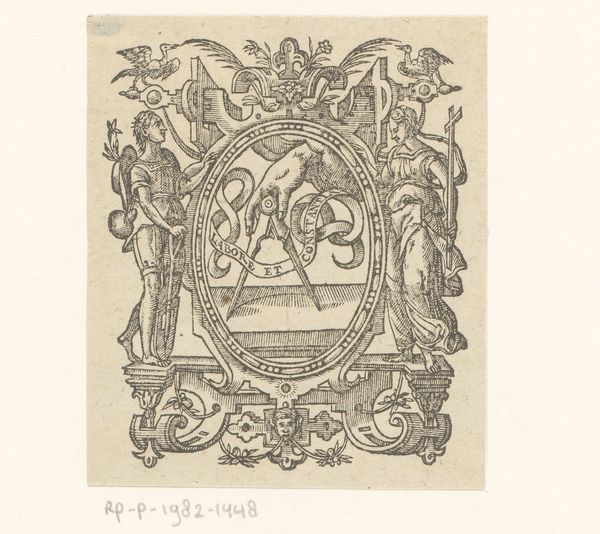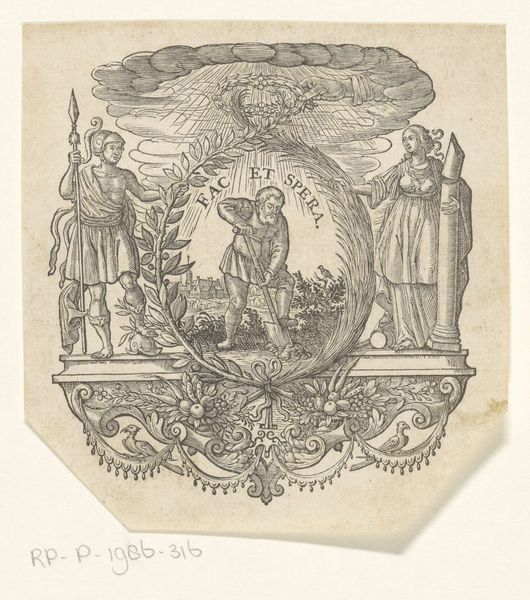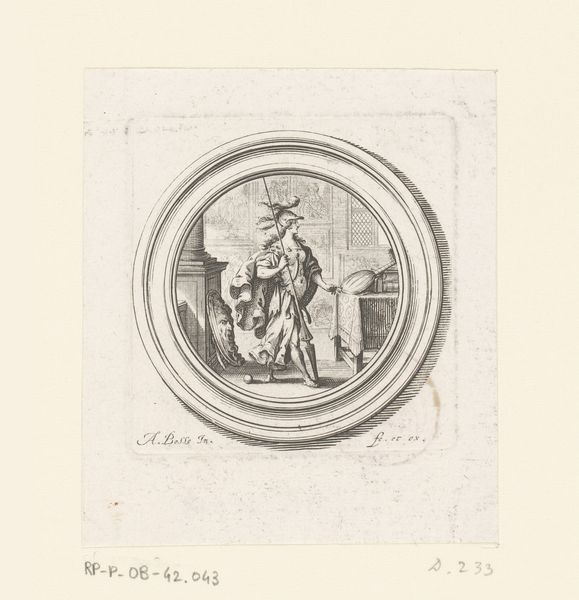
print, engraving
#
portrait
#
allegory
#
baroque
# print
#
engraving
#
miniature
Dimensions: height 56 mm, width 56 mm
Copyright: Rijks Museum: Open Domain
Curator: Here we have the "Huwelijksmedaillon," or "Wedding Medallion," an engraving dating from around 1618 and created by the artist known only as Monogrammist AB. What are your initial impressions of this tiny print? Editor: Well, the first thing that strikes me is the overall darkness, despite its miniature scale. The density of lines creates a heavy atmosphere, almost a sense of foreboding that feels rather peculiar for a wedding scene. Curator: It’s tempting to read this heaviness as a very Dutch acknowledgment of life's complexities, even at a moment of celebration. Notice how the artist weaves in memento mori: look closely and you'll see the figure of death sitting at the couple's feet. Editor: Indeed, the skeleton serves as a constant reminder. And above them, an angel holds not a blessing but what seems to be a rod and scales, instruments of measurement and judgment. Curator: This speaks to a prevailing worldview in that era, emphasizing that earthly love and happiness exist alongside the certainty of death and divine accounting. The iconography suggests a marriage of both earthly delight and spiritual responsibility. Editor: And that responsibility is heavy. It’s remarkable how much the artist has conveyed through the contrast of light and shadow. The crisp detail and complex textures of their garments is quite masterful given the piece's dimensions. It creates a very interesting tension, this meticulous rendering of surfaces against the backdrop of mortality. Curator: Yes, the tension beautifully encapsulates the broader theme, doesn’t it? A contemplation on commitment and mortality captured in a moment. Editor: It’s a testament to the enduring power of visual metaphor, isn’t it? A potent reminder about life’s inherent transience. Curator: Absolutely. This little "Wedding Medallion" encapsulates much more than meets the eye; it’s an invitation to reflect on deeper truths, both social and personal. Editor: And a reminder that form itself carries meaning. The density of line, the scale, the very arrangement of figures… each contributes to a much larger story.
Comments
No comments
Be the first to comment and join the conversation on the ultimate creative platform.

